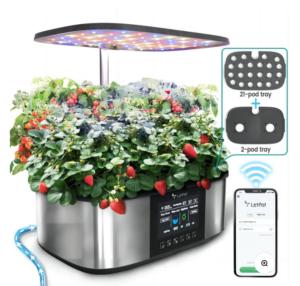Shade-Tolerant Vegetables
“Vegetables and Herbs That You Can Grow in the Shade” offers vital guidance for gardeners working with limited sunlight. Based on “How Much Sun do Vegetables Need: A Complete List,” we’ve put together a detailed inventory of vegetables and herbs that are adaptable to low-light conditions, including arugula, beets, bok choy, Swiss chard, collards, kale, various lettuces, mustard greens, parsley, spinach, and chives. Additionally, we’ve provided essential information on the minimal and optimal sunlight requirements for each plant, examined how different lighting conditions affect growth and productivity, and delivered practical strategies for managing productive gardens in shaded areas.
Important Note: This article targets vegetables and herbs that do well with low-light exposure and grow under conditions ranging from Partial Sun to Partial Shade. Here, we define these shade-tolerant plants as those requiring a minimum of 4 to 6 hours of direct sunlight daily or less, though not necessarily in a continuous stretch.
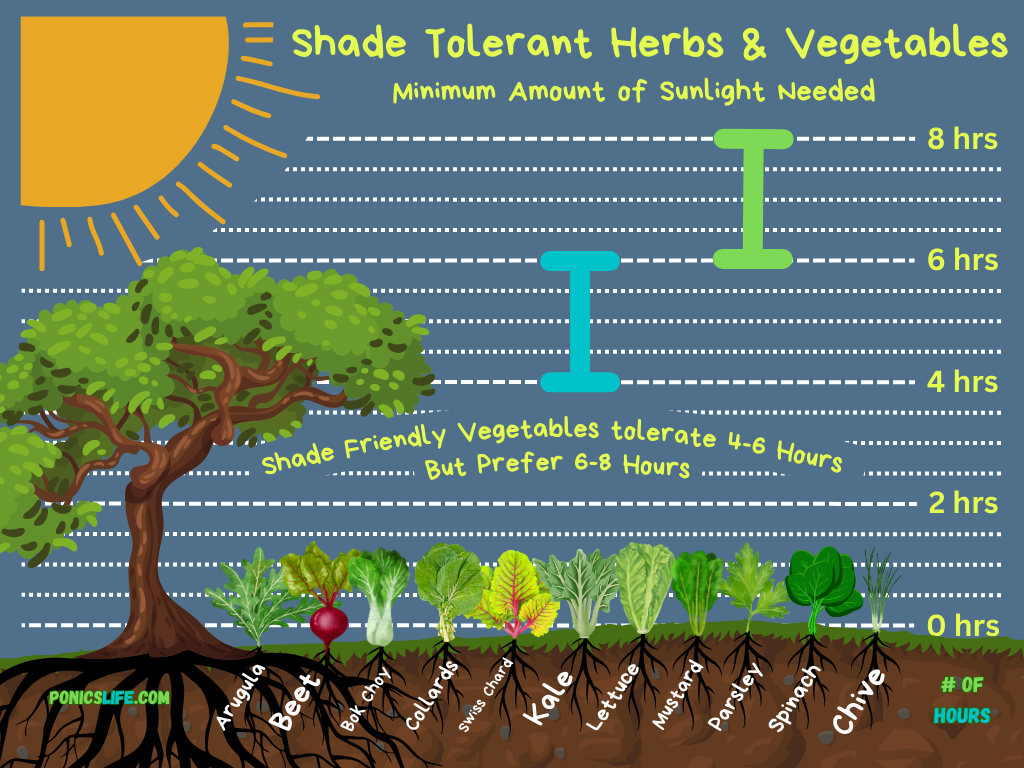
Shade Tolerant Vegetables Chart
| Vegetable | Does Well in Shade | Direct Sunlight Minimum | Direct Sunlight Preference |
|---|---|---|---|
| Arugula | Shade Tolerant | 4 – 6 hours/day | 6 – 8 hours/day |
| Celtuce | Shade Tolerant | 4 – 6 hours/day | 6 – 8 hours/day |
| Beet | Shade Tolerant | 4 – 6 hours/day | 6 – 8 hours/day |
| Bok Choy | Shade Tolerant | 4 – 6 hours/day | 6 – 8 hours/day |
| Chard, Swiss | Shade Tolerant | 4 – 6 hours/day | 6 – 8 hours/day |
| Chicory (Endive, Escarole) | Shade Tolerant | 4 – 6 hours/day | 6 – 8 hours/day |
| Chicory, Italian Dandelion | Shade Tolerant | 4 – 6 hours/day | 6 – 8 hours/day |
| Chive | Shade Tolerant | 4 – 6 hours/day | 6 – 8 hours/day |
| Collards | Shade Tolerant | 4 – 6 hours/day | 6 – 8 hours/day |
| Kale | Shade Tolerant | 4 – 6 hours/day | 6 – 8 hours/day |
| Lettuce, Head | Shade Tolerant | 4 – 6 hours/day | 6 – 8 hours/day |
| Lettuce, Leaf | Shade Tolerant | 4 – 6 hours/day | 6 – 8 hours/day |
| Mustard Greens | Shade Tolerant | 4 – 6 hours/day | 6 – 8 hours/day |
| Parsley | Shade Tolerant | 4 – 6 hours/day | 6 – 8 hours/day |
| Spinach | Shade Tolerant | 4-6 hours/day | 6-8 hours/day |
| Turnip | Shade Tolerant | 4-6 hours/day | 6 – 8 hours/day |
Shade-Tolerant Vegetables
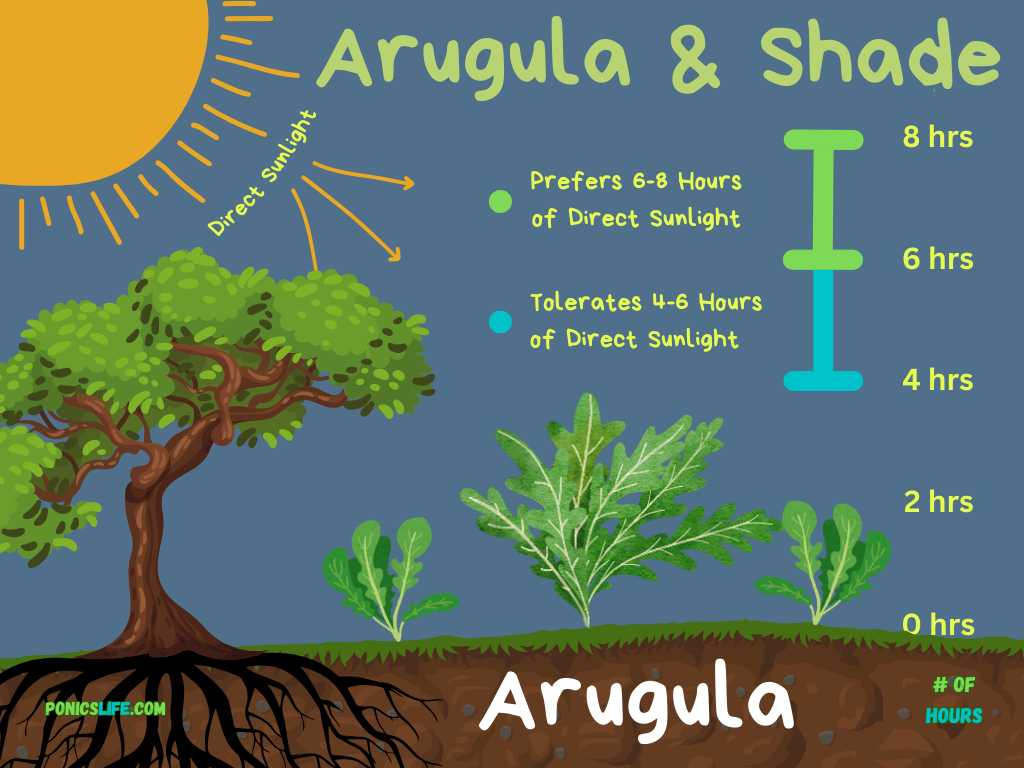
Arugula and Shade
Arugula, a peppery leafy green, exhibits good tolerance to partial shade, making it a versatile crop for gardeners with limited sunlight. Though it thrives best in full sun, growing arugula in shade can lead to slower but continuous growth, often resulting in tender leaves. This shade tolerance allows for extended harvesting periods, especially in hot climates where the shade can prevent premature bolting.
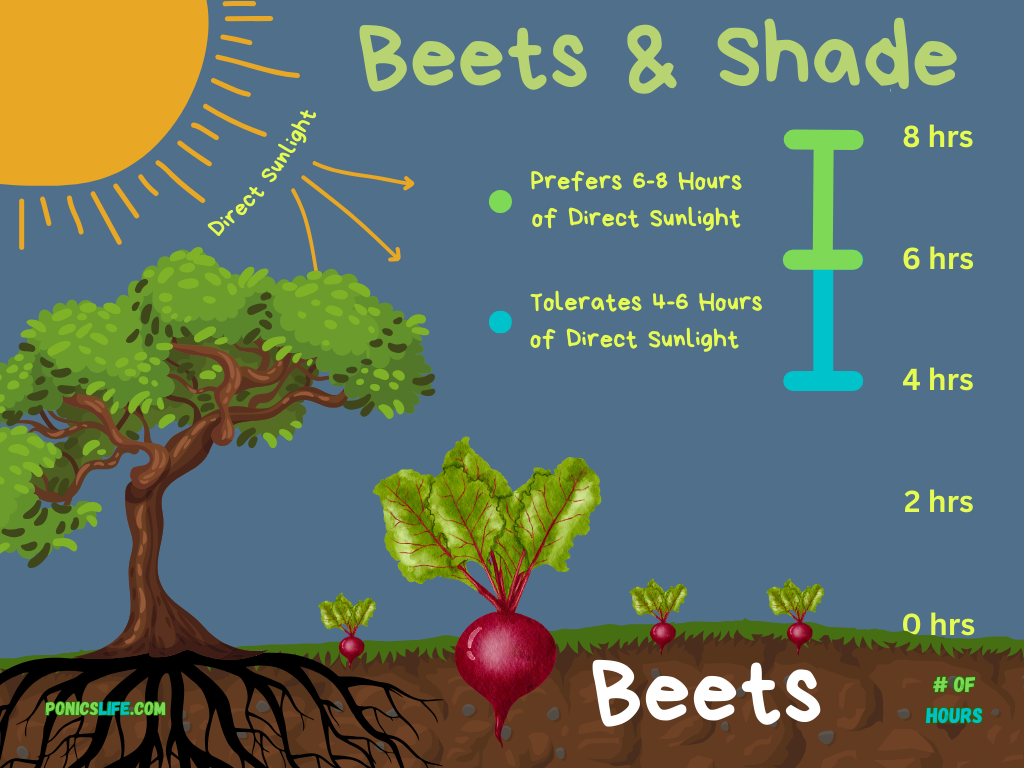
Beets and Shade
Beets are moderately shade-tolerant vegetables that can thrive in both full sun and partially shaded conditions. While they prefer full sun, a little shade can protect them from excessive heat and prevent premature bolting. In less than optimal sunlight, beets may grow slower and produce smaller roots but will often have larger, flavorful greens.
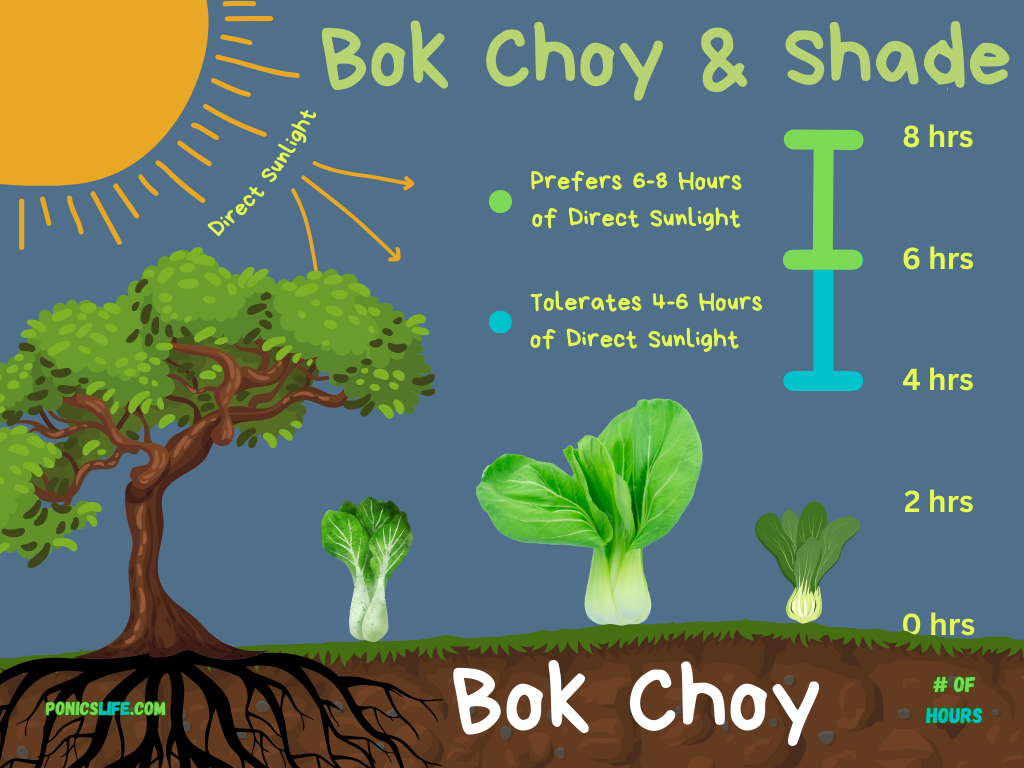
Bok Choy and Shade
Bok choy, a crisp and tender leafy green popular in Asian cuisine, performs well under partial shade, ideal for gardeners with varying garden light conditions. While it appreciates some sunlight, moderate shade can help prevent bolting and maintain its succulent texture. This adaptability makes bok choy a reliable choice for producing a steady crop, even in less sunny garden spots.
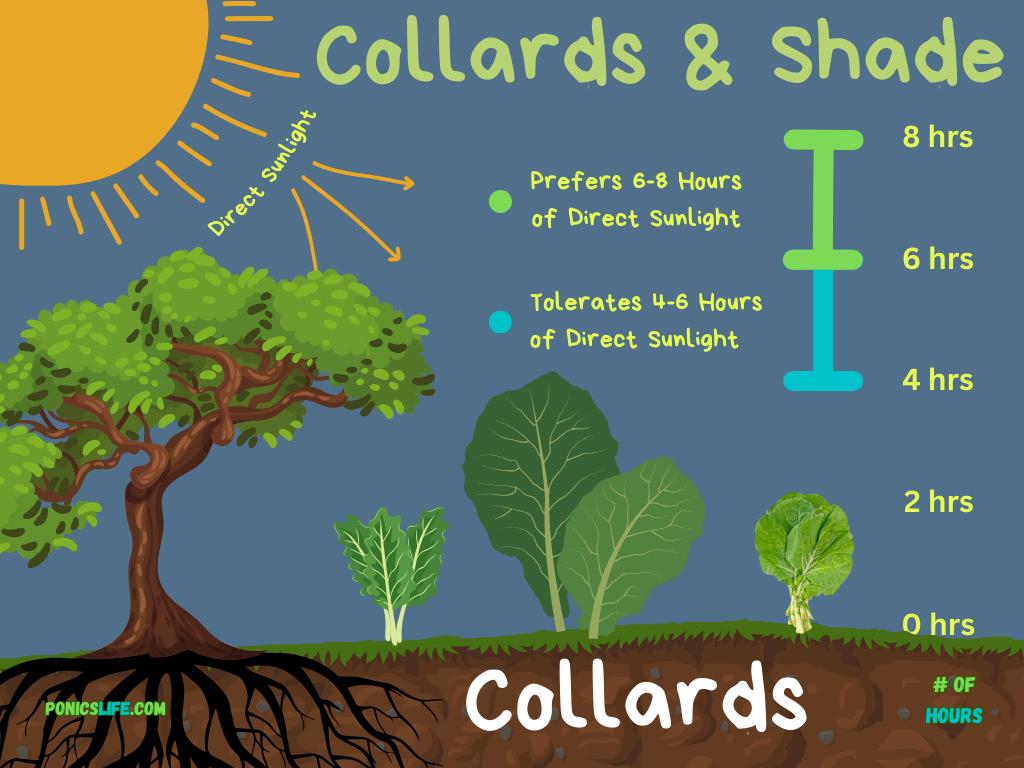
Collards and Shade
Collard greens, known for their hearty leaves and nutritional value, exhibit excellent shade tolerance, thriving in both full sun and partial shade. This adaptability ensures they can produce lush, flavorful leaves even in lower light conditions, making them a robust choice for diverse garden settings. The shade can also contribute to a milder, less bitter flavor, enhancing their culinary appeal.
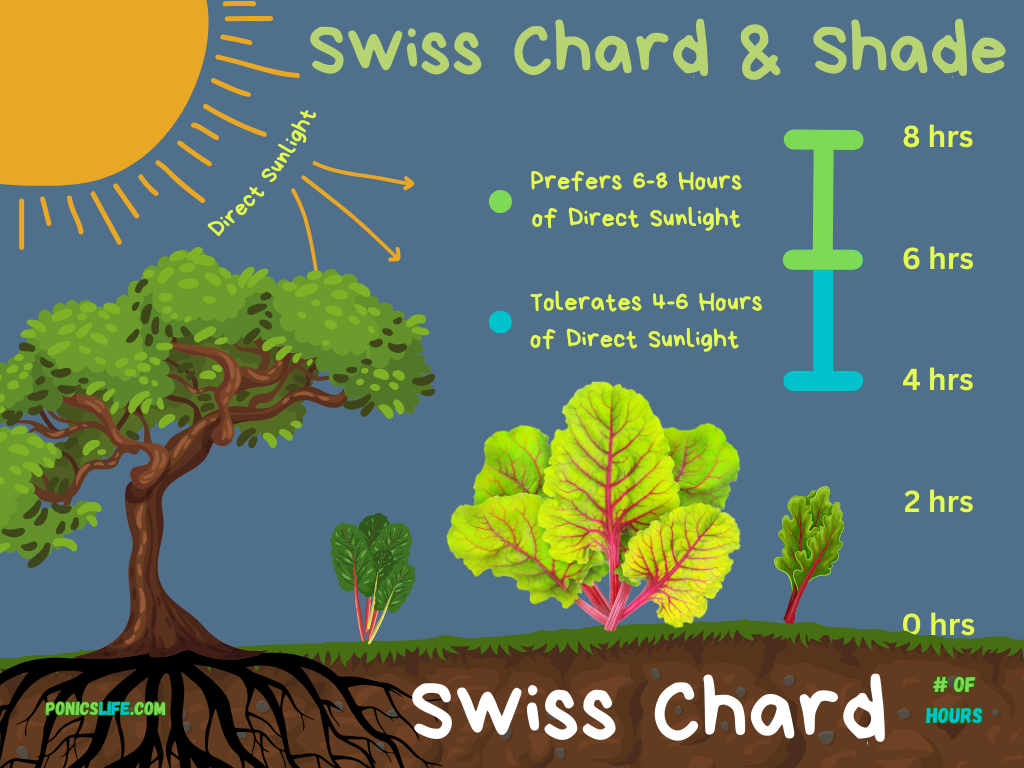
Swiss Chard and Shade
Swiss chard, with its vibrant stems and hearty leaves, is notably shade-tolerant, thriving in both sun and partial shade environments. This flexibility allows it to produce bountiful harvests even in gardens with varied light exposure. The partial shade can reduce leaf scorch and enhance the sweetness of the leaves, making Swiss chard a versatile and attractive choice for gardeners aiming for both aesthetic appeal and taste.

Kale and Shade
Kale, a robust and nutrient-rich leafy green, flourishes in both full sun and partial shade, making it highly adaptable to different gardening conditions. Its shade tolerance allows for slower, but steady growth, often resulting in tender and sweet leaves. This characteristic makes kale an ideal crop for extending the growing season, especially in areas with varying light levels.
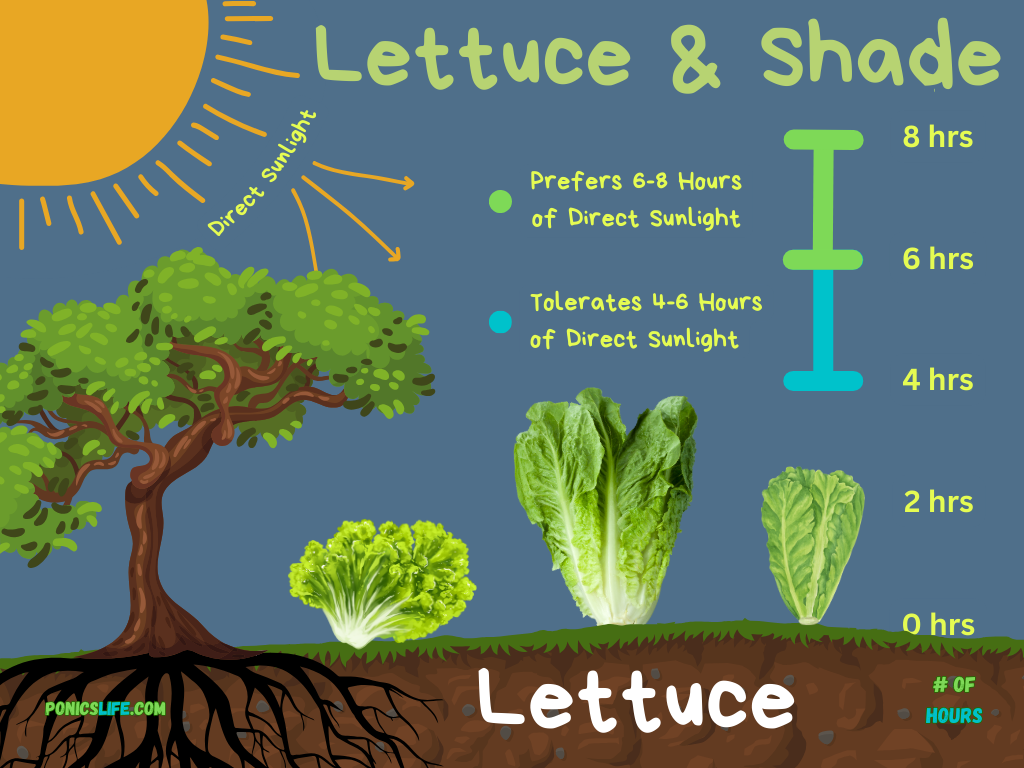
Lettuce and Shade
Lettuce, a staple in salads, shows a high tolerance for shade, thriving in cool conditions with limited sunlight. This shade tolerance not only prevents bolting in warmer temperatures but can also lead to crisper, more tender leaves. Lettuce’s adaptability to partial shade makes it an excellent choice for gardeners dealing with diverse lighting conditions, ensuring a continuous and flavorful harvest.
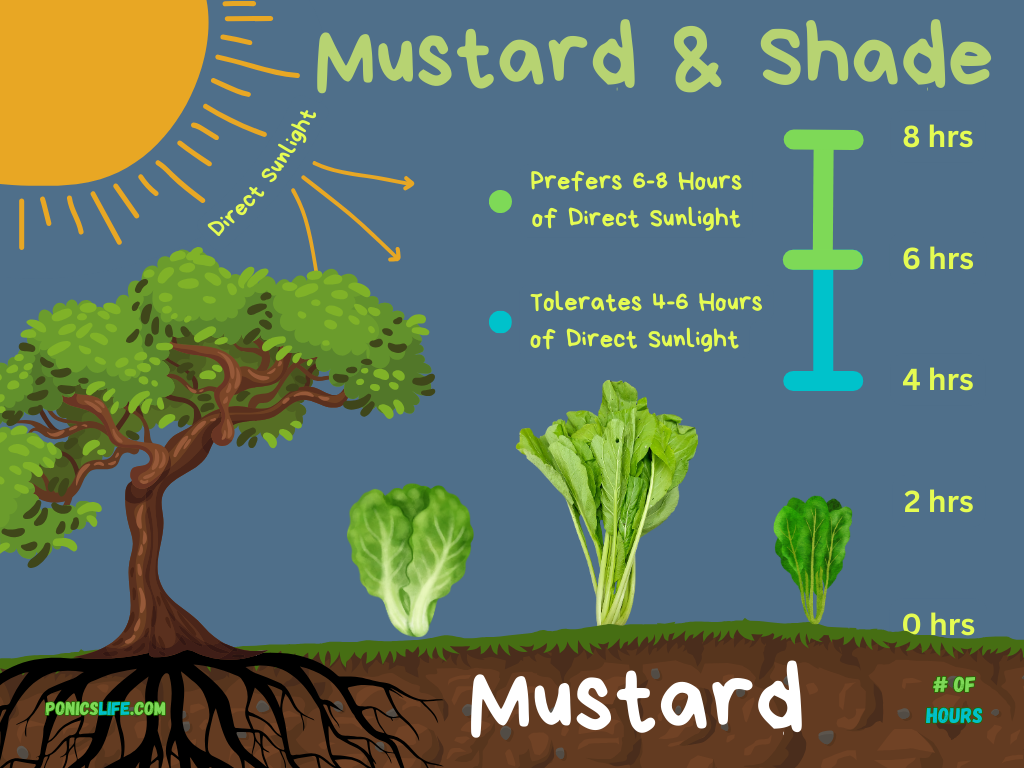
Mustard and Shade
Mustard greens, with their spicy and peppery flavor, display a good tolerance for partial shade, thriving in both sun-drenched and lightly shaded areas. This versatility ensures a vigorous growth and potentially more tender leaves in less intense light. Ideal for gardens with variable sunlight, mustard greens can provide a continuous harvest of flavorful greens, adding zest to a variety of dishes.
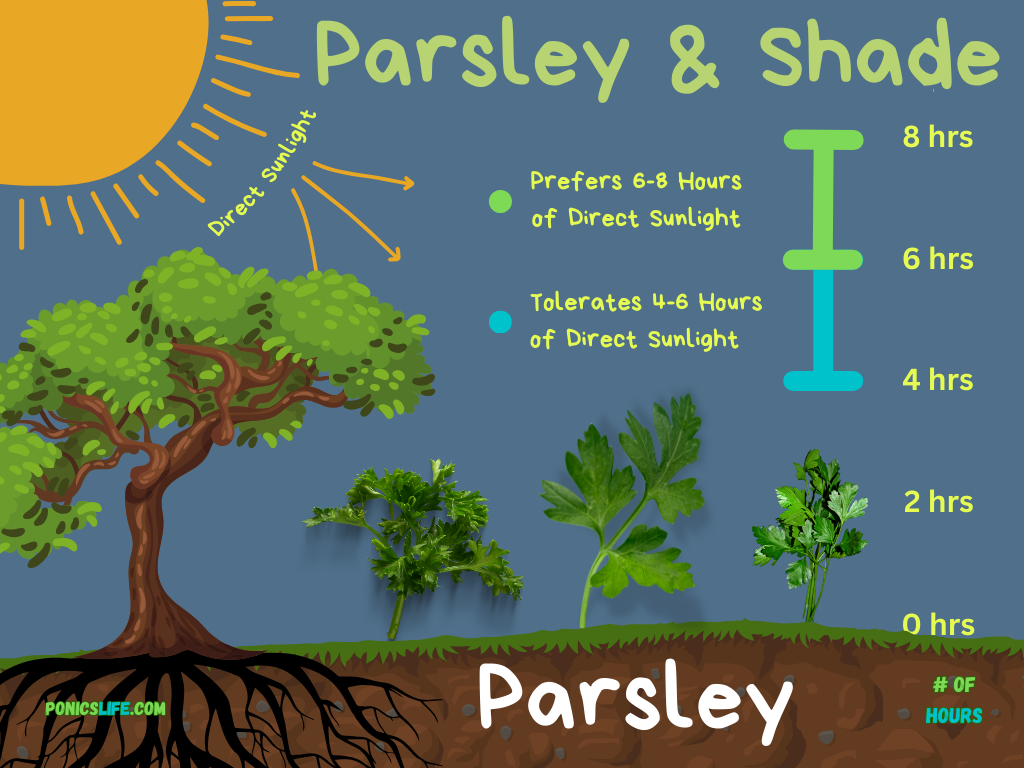
Parsley and Shade
Parsley, a versatile and aromatic herb, flourishes in both full sun and partial shade, making it suitable for a wide range of gardening situations. Its shade tolerance can lead to lusher, more vibrant foliage, enhancing both the visual appeal and flavor of the leaves. This adaptability makes parsley a reliable and flavorful addition to gardens, even those with varying degrees of sunlight.
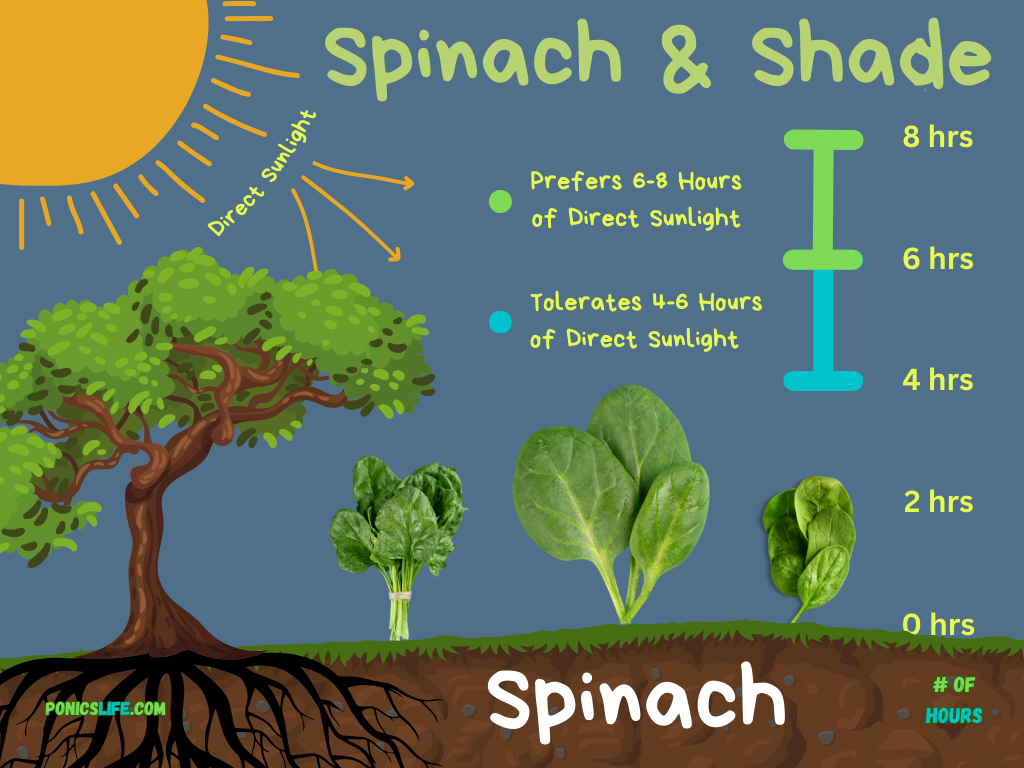
Spinach and Shade
Spinach, a nutrient-packed leafy green, is highly adaptable and grows well in both full sun and partial shade. Its tolerance for lower light conditions can result in slower, but continuous growth, producing tender and flavorful leaves. This makes spinach an ideal choice for gardeners aiming to maximize their harvest in areas with varied light exposure, ensuring a steady supply of fresh greens.
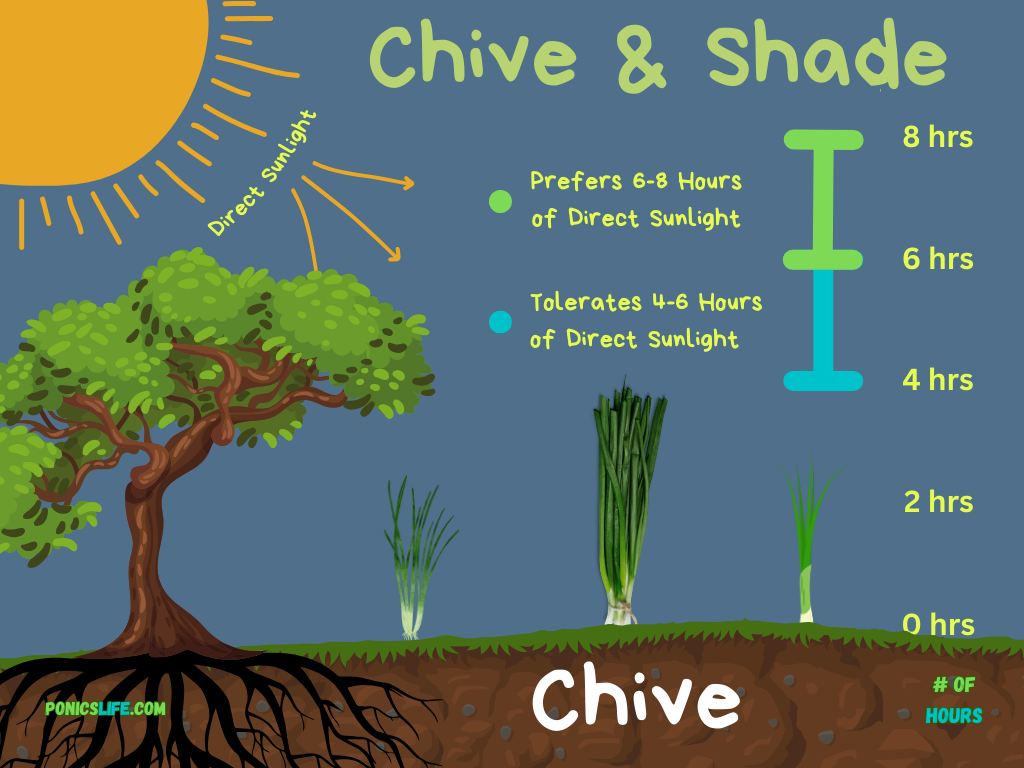
Chive and Shade
Chives, with their delicate onion flavor, thrive in a variety of lighting conditions, including full sun and moderate shade. This shade tolerance allows them to maintain steady growth and flavorful harvests even in less sunny garden spots. Their resilience and adaptability make chives a popular and easy-to-grow herb for culinary enthusiasts looking to enhance their dishes with fresh, homegrown ingredients.
FAQs
What exactly does “shade-tolerant” mean for vegetables?
For purposes of this article, we’ve defined shade-tolerant vegetables are those that can grow and produce a bountiful harvest with less direct sunlight—specifically, those that require between 4 to 6 hours of direct sunlight daily, or even less. This category includes plants that can thrive in conditions labeled as Partial Sun to Partial Shade.
Can shade-tolerant vegetables grow in full shade?
While these vegetables are adaptable to lower light levels, full shade (very little to no direct sunlight) is not ideal for most. They need a minimum amount of direct sunlight to photosynthesize and produce healthy growth, typically at least 4 hours.
How does shade affect the growth and taste of shade-tolerant vegetables?
Shade can sometimes slow the growth rate of vegetables but often leads to tender, more flavorful greens. For some vegetables, such as lettuce and spinach, it can also reduce bitterness and produce a crisper texture.
Can I grow shade-tolerant vegetables in pots or containers?
Absolutely! Many shade-tolerant vegetables do well in containers, provided they have enough soil and are watered regularly. This can be a great option for balconies or patios with partial shade.
How can I maximize the yield of shade-tolerant vegetables in a shady garden?
Optimize your garden layout by planting the most shade-tolerant vegetables in the shadiest spots and those that can tolerate more sun in slightly brighter areas. Also, consider using reflective mulches to increase light exposure and keep soil moist to support growth.
Do shade-tolerant vegetables require different care than those grown in full sun?
While the basic care principles (watering, soil quality, and pest management) remain the same, shade-tolerant vegetables may require less water due to reduced evaporation in cooler, shaded areas. Monitoring for pests and diseases is also crucial, as some can thrive in cooler, damp conditions.
What are some examples of shade-tolerant vegetables?
Examples include arugula, beets, bok choy, Swiss chard, collards, kale, various types of lettuce, mustard greens, parsley, spinach, and chives. These vegetables can perform well with limited sunlight, making them versatile choices for shaded gardens.
Can shade-tolerant vegetables be part of companion planting strategies?
Yes, many shade-tolerant vegetables can benefit from being planted alongside compatible crops that may provide natural shade or support beneficial insect populations, enhancing overall garden health and productivity.
Where did this information come from?
The chart came from How Much Sun do Vegetables Need: A Complete List, which was primarily built from individual plant profiles from the University of Maryland Extension.
Are shade-tolerant vegetables relevant to hydroponics?
Yes, shade-tolerant vegetables are highly relevant to hydroponics, especially if growing outdoors. While hydroponics provides precise control over nutrients and water, the amount of natural sunlight the plants receive also plays a crucial role in their growth and development. For outdoor hydroponic systems, shade-tolerant varieties need a minimum amount of light to thrive, just as they would in soil.




